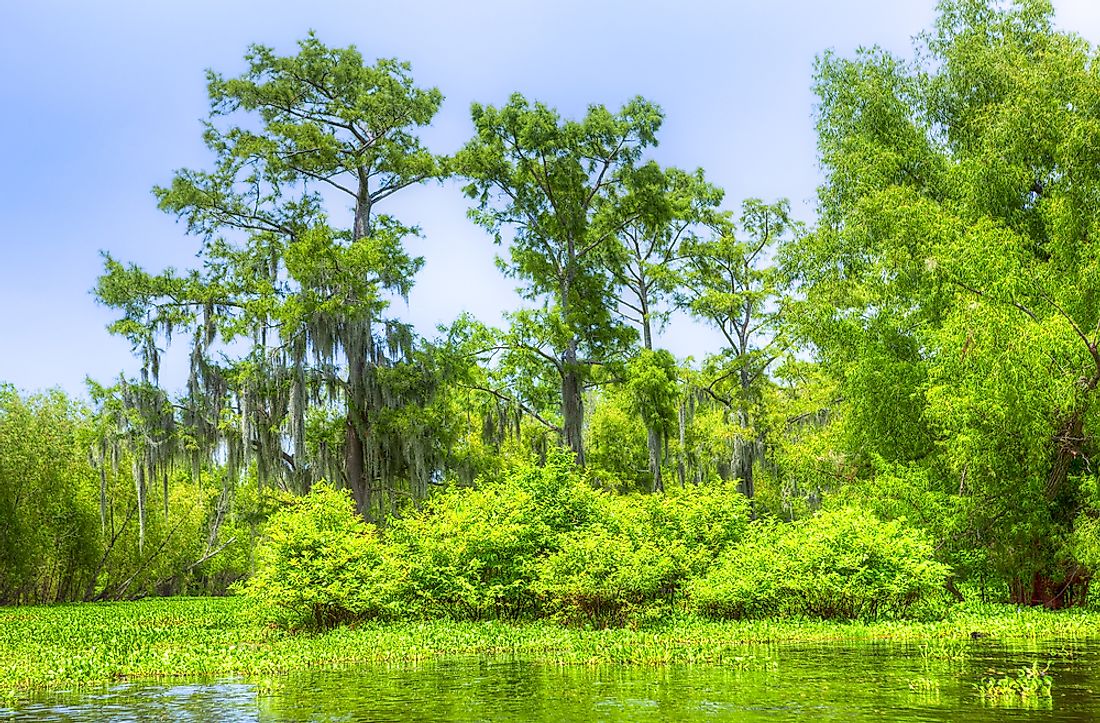Louisiana Black Bear Facts: Animals of North America

On February 7, 1992, the Louisiana Black bear (Ursus americanus luteolus), was listed by the U.S Fish and Wildlife Service as a species under threat in a detailed plan that was written to help maintain the Louisiana black bear populations so that they can remain well connected and relatively self-sustaining. One of the main steps taken to ensure this happens is through the reduction of loss of the suitable forested habitats for the black bears.
Reproduction
The breeding period of black bear takes place during summer. The females start their breeding when they reach 3 to 4 years old. The gestation period lasts between seven and eight months, and the female black bears give birth to a litter of 2 to 4 cubs that remain with their mother only for the first year after which they are then released to find and secure their territories. The cubs are weaned when they reach 8 months.
Behavior
Known for their ability to travel long distances, Louisiana black bears are sighted by citizens in diverse locations which are not normally considered to be bear habitats. Some of the locations these black bears have been seen are Bossier City, Allen Parish, and Kisatchie National Forest. Considered to be very intelligent animals, Louisiana black bears are also secretive and shy hence the reason for not having much contact with humans. Having a keen sense of smell gives this black bear the ability to locate their food and protect themselves from any outside dangers.
Habitat and Range
Once noted for being a regular inhabitant of Mississippi, eastern Texas, and Louisiana’s forested regions, the majority of these bears were exterminated in these regions between 1900 and 1940. Currently located within the state of Louisiana’s boundaries, the Louisiana black bear’s largest populations are in the Tensas River Basin and the Atchafalaya River Basin. The solitary juvenile males occasionally move into the western section of the Mississippi and to the Eastern part of Texas. The male bears usually have large home ranges compared to the females.The ongoing genetics research is working to uncover whether this species of the black bear may be present in selected portions of Southeast Arkansas. The Louisiana black bear has protection in the historical range category just as the American Black bear. Being federally listed as a species under threat, the black bear is normally well cared for and given high legal protection.
Diet
The key requirements in the habitat of the Louisiana black bear have always been sufficient cover, food, water, and denning locations that are spatially organized. Despite the fact that Louisiana black bears are classified to be carnivores, they are not active predators, but rather have a diet that is majorly omnivorous which has a lot of vegetables and fruits. These animals are known to enjoy hard nuts and acorns, soft mast fruits that are fleshy, and berries. They occasionally consume insect larvae and other crops such as sugarcane, corn, and wheat.
Physical Description
Louisiana black bears are large mammals that are covered in bulky black hair with a relatively short tail, and they are one of the 16 recognized subspecies from North America called the Louisiana black bear. The facial profile of the black bear is rather blunt with small eyes and broad nostrils encompassed in its distinct nose pad. Present at the lower area of the throat and chest is a yellowish-brown muzzle spotting a white patch. The front and the hind feet all have five short toes bearing the Louisiana black bear’s signature curved claws, used for ease of movement and feeding. Adult females weigh between 120 to more than 180 pounds. Males tend to be much larger, with a weight range of 300 to 400 pounds. The general body length of the Louisiana black bear ranges from as low as 4 to 7 feet. Compared to other black bear skulls, the Louisiana black bear’s skull tends to be majorly narrow, flat, and long.







